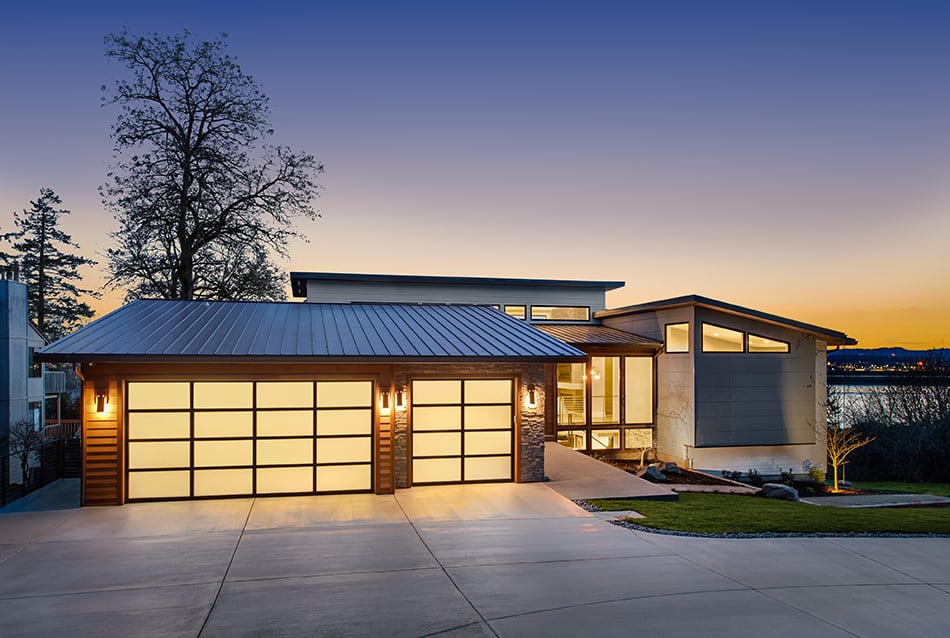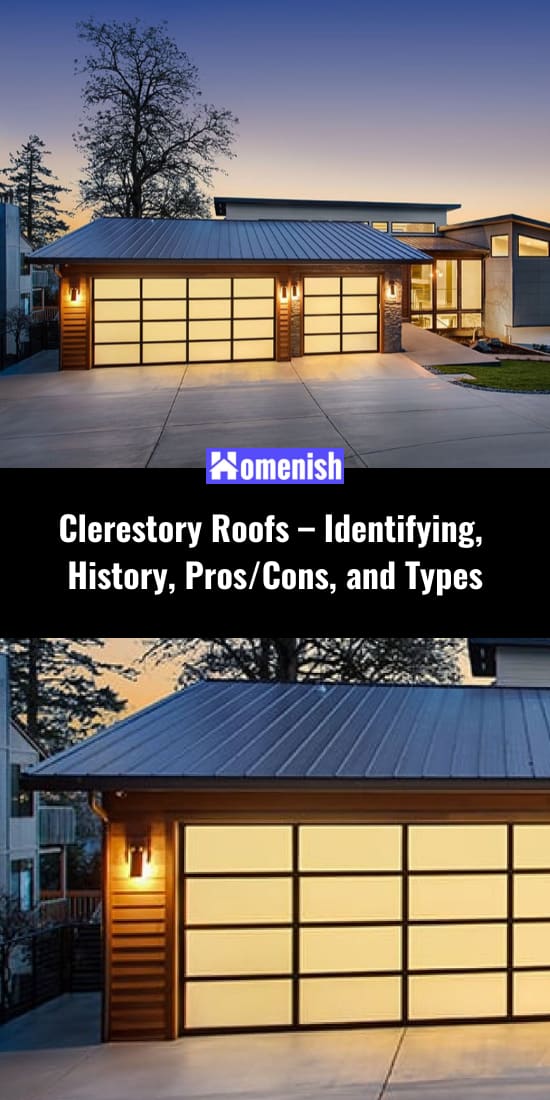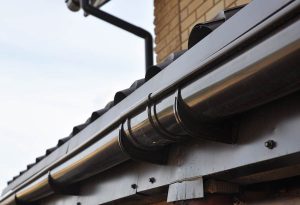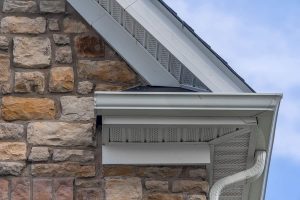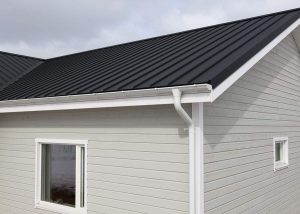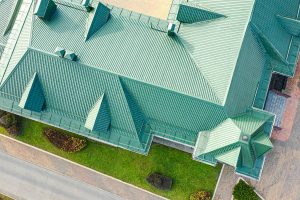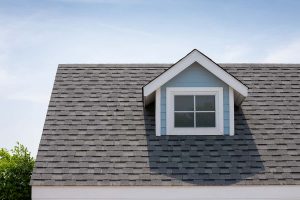A clerestory roof is made up of sloping roof panels at slightly differing heights, which are joined in the middle by a vertical flat wall. The wall is filled with windows, therefore allowing natural light to flood into the building. The windows can be made up of several small windows or one large rectangular window. The name clerestory refers to these windows, which make up a ‘clear story’ between the two sloping roofs.
Identifying Structure
A clerestory roof can be identified by the long strip of windows, which are fixed into the vertically flat wall between two portions of a roof. Generally, the two sides of the roof will be flat and sloping at a downward angle, but this is not always the case. The two sides of the roof can be of equal sizes, or one might be larger than the other.
History
Clerestory roofs are an ancient design feature that dates back to Egyptian and Roman times. These types of roofs were used in ancient Egyptian temples, where slits were made into high stone bricks to create a source of light. These types of roofs were also prominent in ancient Roman architecture, predominantly in basilicas.
Clerestory roofs can also be seen in early examples of Christian churches in Europe. There is also a reference to a clerestory roof in the bible, which King Soloman built as part of a temple. They were used because the windows were an ideal way to naturally illuminate large buildings while also preventing people from peeking inside. It is for these reasons that clerestory roofs are still popular today, in modern public buildings as well as offices and homes.
Pros of Clerestory Roofs
Free up wall space
One of the benefits of clerestory roofs is that the windows are high up, and therefore the walls which are at eye level can remain free for other uses besides windows. This means a building will have more space for hanging art, mirrors or installing book shelving. It can also make arranging furniture easier because you don’t have to take into account the placement of windows.
Improve natural light
The main reason clerestory roofs are popular is because of their ability to bathe a space in natural light. The light flooding in overhead gives a more natural lighting feel compared with windows at eye-level and provides a more ambient and organic atmosphere.
Privacy
One of the great things about clerestory windows is the way they make a space feel open and airy while still maintaining total privacy. The height of the windows means that outsiders are prevented from being able to see inside the building, offering the occupants peace of mind.
The reverse can also be useful in some buildings. For example, if your home does not have a good view or looks over onto an undesirable space, then you can block out that view by having solid walls at eye level and using a clerestory roof to still ensure good lighting. In some cases, such as in churches, clerestory roofs not only prevent outsiders from looking in but also prevent the occupants from looking out. This is an advantage if you have a building in which you don’t want the occupants to have outside distractions.
Ventilation
Clerestory roofs offer improved ventilation if the windows are able to open. The height of the windows in clerestory roofs is especially useful in hot climates because hot air rises and is then able to escape out of the tall windows to help lower the temperature in the building. This makes buildings with clerestory roofs better able to cool down compared with buildings that have standard windows at eye level.
Avoid glare
The height of clerestory windows means that you can avoid the glare that comes along with windows that are at eye level. Sunlight coming into a building through regular eye-level windows can often be blinding for the occupants, requiring drapes to be drawn or blinds to be closed, which then results in a dark room during the middle of the day.
The glare can also be particularly annoying if you’re trying to watch tv at home or if the view of your computer screen in your office is being interrupted. The use of clerestory roofs will eradicate the problem of glare, therefore making the space inside the building more usable.
Environmentally friendly
Many creators of modern homes who have an interest in creating environmentally friendly buildings are choosing clerestory roofs because of the way they utilize natural light and therefore require less artificial lighting.
The result of this is not just a more ambiently lit space, but it also results in homeowners using less power and electricity, therefore making it a more sustainable and environmentally friendly choice compared with standard roof designs. The improved ventilation of clerestory roofs also makes it less likely for air conditioning systems to be required in the building, which again reduces power usage and positively impacts the environment.
Maximize view
Another advantage of clerestory roofs is that they allow you to take advantage of the views around the property, whether that be distant mountains or wide-open skies. The height of the windows means you get to see an angle that you wouldn’t ordinarily be privy to with a solid roof.
Improve aesthetics
Clerestory roofs offer plenty of functional advantages, but they are also a visually appealing design feature. A clerestory roof gives a unique appeal to a property, separating it from the standard roofs we are used to seeing on the majority of buildings.
In spite of clerestory roofs being a feature of ancient design, clerestory roofs in modern homes can give the building a very minimalist and contemporary feel, especially if the windows are made from one long sheet of glass. The look of clerestory roofs are popular and can add curb appeal to a home.
Cons of Clerestory Roofs
Too much light
Clerestory roofs are designed specifically to allow more light into a space, but what happens if you want to block out the light? Maybe you want to create a dark space to hold an atmospheric dinner party, or you want to take a nap during the day. In these instances, clerestory roofs can become quite a problem because finding blinds or curtains which fit them is very difficult, and operating them from ground level is even harder.
Many people also feel that installing blinds on clerestory windows ruins the look of them, and so the problem of being unable to block out the light remains.
Heat loss
Clerestory roofs are known to lose more heat compared with regular eye-level windows. This is because heat rises and is better able to escape through windows compared with a solid ceiling and roof. Even excellent double glazing in clerestory roofs will still typically lose more heat than eye-level windows, purely because of the placement of them. This is less of a consideration in hot climates, but in cooler climates can become an issue and result in greater power usage and higher utility bills to heat the property.
Types of Clerestory Roofs
Symmetrical
Symmetrical clerestory roofs will resemble a gable roof, with two flat slanting roof panels that are angled at a triangle over the top of the building to almost meet in the middle.
Asymmetrical
Asymmetrical clerestory roofs might have more in common with a skillion roof, where only one roof panel is used at a sloping angle, with high up windows fitted just underneath the tallest part of the roof panel, on the flat vertical wall.
Why Choose a Clerestory Roof?
Clerestory roofs can be used in almost any building design to improve natural light and ventilation, but they are especially useful in certain types of buildings. Small buildings that might otherwise feel claustrophobic can be greatly improved with clerestory roofs, as they add a feeling of airiness and space.
Buildings in hot climates that struggle with high temperatures can also greatly benefit from clerestory roofs, as they allow the rising hot air to escape more easily compared with eye-level windows.
What Does a Clerestory Roof Cost?
You can expect a clerestory roof to cost more to build than a standard roof design because when roof lines are more complex, this increases the price of both materials and labor. Additionally, the cost of glazing the clerestory roof will also be an expense.
The price of windows can vary dramatically depending on the quality and design, but it is advisable not to try to source the most inexpensive windows as they will probably be inefficient in terms of energy, and you will end up paying for the decision in the long run with increased energy bills.
Although a clerestory roof can be an expensive addition to a building, they do typically increase the purchase price of a property and make it more desirable to buyers, and so if you plan to eventually sell the property, you can expect to make your money back on the investment.
